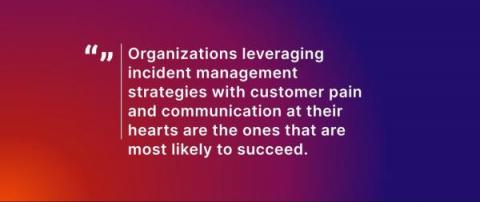Operations | Monitoring | ITSM | DevOps | Cloud
Latest News
New reports stress the importance of strategic incident management practice
Engineers have been managing incidents for as long as they’ve been building software, but the idea of incident management as a strategic practice in its own right is still finding its place. We’re starting to see big shifts in that area, though — more companies are dedicating headcount, resources, and tools to help them better prepare for, respond to, and learn from their incidents.
How to Put Software Development Security First
What are the keys to building software development security into the early stages of product development? And what are the costs of ignoring security? In this article, xMatters Product Manager Kit Brown-Watts provides his insights on the matter. Every investment decision comes with trade-offs, usually in the form of cost, quality, or speed. The CQS Matrix, as I like to call it, captures the dilemma most product people face.
SRE Hiring Guide - Interview Questions and Skills to Look for
Beating the odds: How log data helps detect and lower MTTR
Building great developer experience at a startup
At incident.io, our number one priority in engineering is pace. The faster we can build great product, the more feedback we can get and the more value we can deliver for our customers. But pace is a funny thing. If you optimise for pace over a single month, you’ll quickly find yourself slowed down by the weight of your past mistakes.
Kubernetes alternatives to Spring Java framework
The Monitoring Problem: Too Many Tools + Too Much Time = No Room for Innovation
Continuous availability and unceasing innovation are prerequisites for today’s digital businesses. So it makes sense that business leaders invest heavily in teams and tools to monitor digital apps and services. In theory, these tools should also free up time for engineers to push new functionalities that wow customers. But do these investments actually result in more uptime and customer-delighting innovations?
Differentiating Between SLO vs. SLA vs. SLI: What They Are and How to Improve Them
What Metrics Should Be Tracked Within Incident Management?
As digital services have become increasingly important to businesses and organizations, reducing downtimes and service disruptions have become critical objectives for business operations. This means management reporting and KPI’s are now crucial to quality management, providing the insight to let you improve incident remediation over time.











